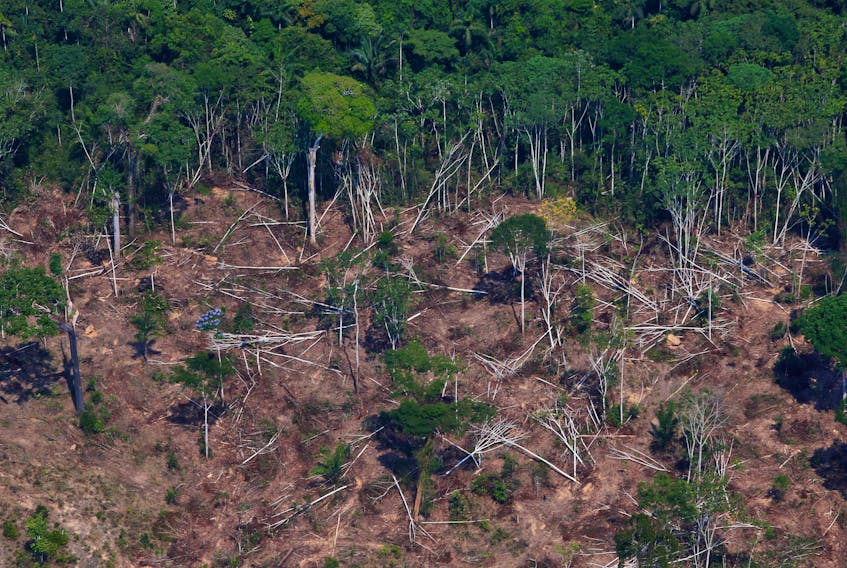ANNE LAMBERT
With the spotlight firmly on climate change, Canadians may feel complacent, believing that we’re doing our part, thanks to carbon pricing and other inducements, to help us shift to a low-carbon economy. That is arguable, but here’s the thing: We get a failing grade on the other essential component of climate change action. It’s an area where we should be a leader.
It is now emerging that what are called natural climate solutions (or nature-based solutions) offer an escape route, along with a rapid reduction in fossil fuel emissions, from our path toward catastrophic climate change. Tropical forests are key to this and this is where Canada has been missing in action.
What’s needed is quite simple.
First and most important: End tropical deforestation and the needless destruction of other natural ecosystems, especially carbon-rich peatlands and coastal ecosystems such as mangroves. This is a super cost-effective way to reduce carbon emissions on a large scale. It also addresses biodiversity loss and preserves millions of forest-dependent livelihoods and water for drinking, irrigation, and hydro power. We need forests as well for resilience they provide to impacts of extreme weather.
Second, we can quickly remove CO2 from the atmosphere on a large scale by restoring lost and degraded forests, especially in the tropics where trees grow rapidly and year-round. There is much degraded land where this can happen, and it can be done without compromising our ability to produce food for a growing human population.
Climate scientists say we need such “negative emissions” to meet our Paris Agreement goal to hold global temperature rise well below 2 degrees Celsius. Carbon capture and storage technologies have the potential to cut emissions from big industrial emissions sources, but these technologies are expensive and will take time to implement. Natural climate solutions are immediate and inexpensive.
When you add up avoided emissions from the loss of natural ecosystems and negative emissions from sequestering carbon in ecosystems, you get a big number. Natural climate solutions (which also include better approaches to agriculture and grasslands) can help the world achieve 37 per cent of the Paris Agreement target through 2030, according to a study published in October 2017 in the journal PNAS.
How and where do we do this?
Tropical forests maintain vast stores of carbon, yet we are losing millions of hectares each year. They are also chock-full of biodiversity. The Amazon alone is home to 6,000 tree species (versus 140 species indigenous to Canada), 5,600 fish species, 1,300 bird species, and an estimated 2.5 million species of insects (most not yet described).
Tropical forests also cool the planet through massive evapotranspiration and cloud formation. Loss of primary forests is especially grievous, as they store 30–70 per cent more carbon than selectively logged and degraded forests, have high biodiversity value, and are irreplaceable on a human time scale.
Many tropical countries favour, and are pursuing, conservation and sustainable development and welcome international help.
What has Canada done to help? Very little.
In recent years, Norway, Germany, and the U.K. have pledged billions in bilateral aid to combat tropical deforestation. Canada has not. And we’re well down the list of countries pledging REDD+ payments to reduce deforestation.
In the Paris Agreement, Canada and other developed countries committed to help developing countries with climate mitigation and adaptation to the tune of US$100 billion a year. Applying at least half of such aid to nature-based solutions makes eminent sense.
Natural climate solutions are compelling. The young Swedish activist, Greta Thunberg, released a video last year saying as much. Canada has the capacity to become a leader in what will inevitably be central to solving climate change and biodiversity loss.
A postscript: Canadians can take pride in something. The largest continuous area of protected tropical forest — an area twice the size of Nova Scotia — is that of the Kayapo Indigenous territories in the Brazilian Amazon. These lands remain intact thanks to a conservation effort pioneered by the Canadian biologist Barbara Zimmerman 30 years ago. Today, the Kayapo and their conservation NGO partners are continuing to hold the line against increasing threats of destructive land invasion in the absence of government enforcement.
Anne Lambert is founding director of the International Conservation Fund of Canada and lives in Chester.









